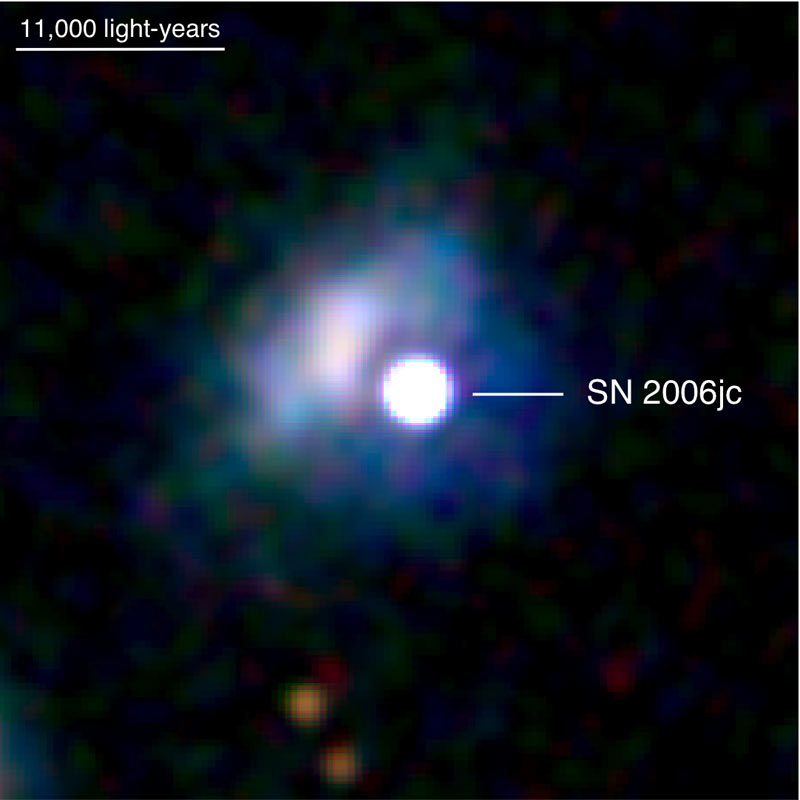Surprising Star Explosion Upsets Theory

A recently-observed supernova is making some astrophysicists doubtprevailing theories for how stars die.
The massive star, located in galaxy UGC 4904 about 77 million light-years from Earth in theconstellation Lynx, threw off a huge amount of material on October 20,2004. This star, which may have been what's known as a Luminous BlueVariable (LBV), was mistaken for a supernova, as LBV'soften are. In fact, some observers refer to them as "supernovaimposters."
Then, inthe fall of 2006, the star exploded into a full supernova, much sooner thanexpected. Dubbed Supernova 2006jc, the dying star's blast wave apparentlyreached the shell of drifting material released in the earlier outburst in merehours.
The waveheated the ejected gases to millions of degrees, sparking X-ray emissions of anintensity and duration never before detected. NASA's Swiftsatellite recorded X-rays brightening from the supernova for anunprecedented 100 days. All previously observed supernovae have initiallyappeared bright in X-rays before quickly turning invisible.
"Wehave never observed a stellar outburst and then later seen the starexplode," said University of California at Berkeleyastronomer Ryan Foley.
Using the10-meter (32.8-foot) Kecktelescope in Hawaii, his group observed narrow helium spectral lines thatshowed that the supernova's blast wave ran into a slow-moving shell ofmaterial, presumed to be the upper layers of the star ejected two yearsearlier. Had the supernova's fast-moving blast wave been measured unobstructed,its spectral lines would have been much broader.
"Itdisrupts our current model of stellar evolution," Foley said. "Wereally don't know what caused this star to have such a large eruption so soonbefore it went supernova."
Breaking space news, the latest updates on rocket launches, skywatching events and more!
Foley'scolleague, Nathan Smith, also of the Universityof California at Berkeley, said, "The fact that we haveno well-established theory for what actually causes these outbursts is theelephant in the living room that nobody is talking about."
Thesupernova, classified as a variant of a Type Ib, wasfirst sighted by Japanese amateur astronomer Koichi Itagaki,American amateur astronomer Tim Puckett and Italian amateur Roberto Gorelli.
- All About Supernovas
- Top 10 Star Mysteries

Space.com is the premier source of space exploration, innovation and astronomy news, chronicling (and celebrating) humanity's ongoing expansion across the final frontier. Originally founded in 1999, Space.com is, and always has been, the passion of writers and editors who are space fans and also trained journalists. Our current news team consists of Editor-in-Chief Tariq Malik; Editor Hanneke Weitering, Senior Space Writer Mike Wall; Senior Writer Meghan Bartels; Senior Writer Chelsea Gohd, Senior Writer Tereza Pultarova and Staff Writer Alexander Cox, focusing on e-commerce. Senior Producer Steve Spaleta oversees our space videos, with Diana Whitcroft as our Social Media Editor.
